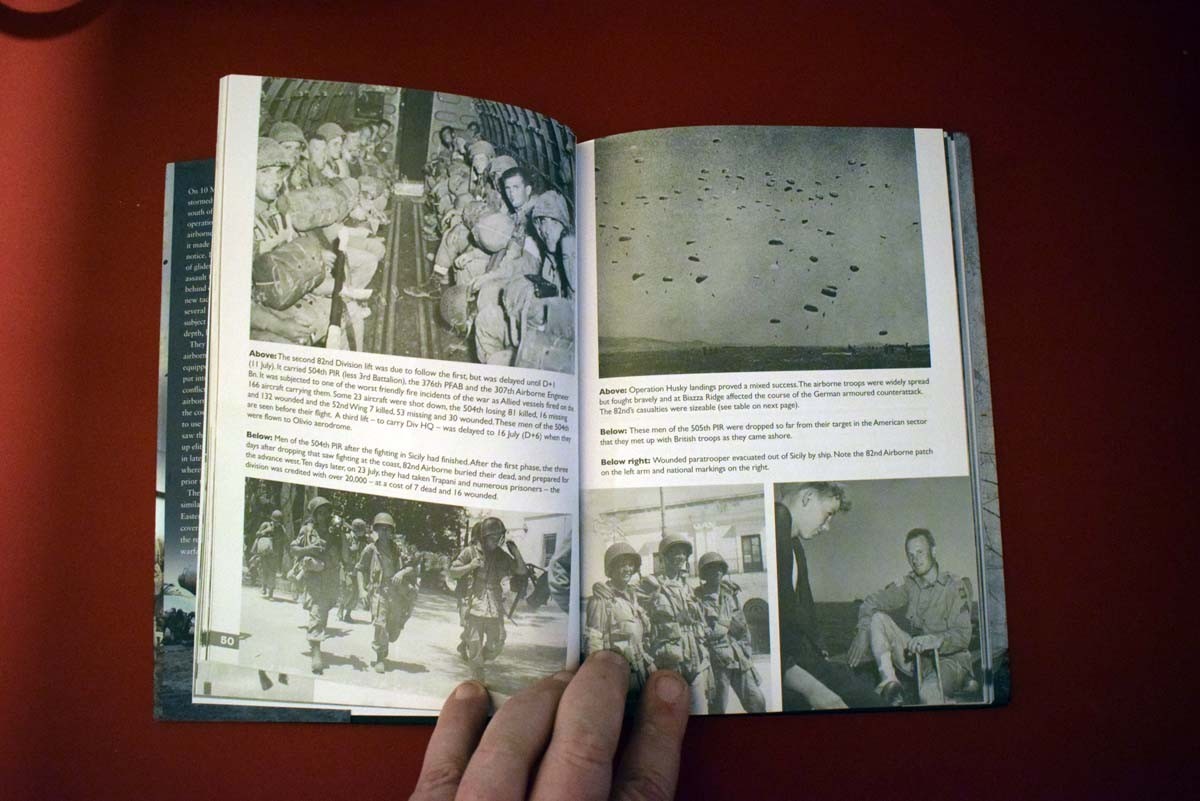
Introduction
The following introduction is taken from the Pen and Sword website:
On 10 May 1940 German Fallschirmjäger stormed the Dutch fort of Eben-Emael, south of Maastricht. The brilliantly executed operation was the first signal success by airborne troops in the Second World War and it made the military world sit up and take notice. Improved parachutes and the creation of gliders that could carry troops meant that assault forces could be dropped or landed behind enemy lines. This was a significant new tactic which had a dramatic impact on several of the key campaigns, and it is the subject of Simon and Jonathan Forty’s in-depth, highly illustrated history.
They tell the story of the development of airborne forces, how they were trained and equipped, and how they were landed and put into action in every theatre of the global conflict. The results were mixed. German airborne forces were victorious on Crete, but the cost was so great that Hitler vowed never to use them in the same way again. The Allies saw things differently. After Crete they built up elite units who would play important roles in later battles – in Normandy, for example, where the British 6th Airborne Division took vital bridges prior to the D-Day landings.
These are just two examples of the many similar operations on the Western and Eastern Fronts and in the Pacific which are covered in this wide-ranging book. It offers the reader a fascinating insight into airborne warfare over seventy years ago.
Review
This offering from Pen and Sword is titled “A Photographic History of Airborne Warfare 1939-1945”, jointly authored by Simon and Jonathan Forty. This is a hard backed book with 232 pages of a satin finished paper. Simon and Jonathan Forty have co-authored many titles similar to this release, and it provides a good mix of text to provide written information and huge numbers of photographs with captions. This particular release looks at Airborne Forces, from both sides of the conflict during World War II.
The contents of this book are set out as follows:
Chapter 1 Conception
Chapter 2 Blitzkrieg
Chapter 3 Crete: The turning point
Chapter 4 The Allies
Chapter 5 German Operations after Crete
Chapter 6 Airborne Operations in the CBI and Pacific Theatres
Chapter 7 Russian Airborne Operations
Chapter 8 Paratroopers as Elite Ground Forces
Chapter 9 Cancelled Operations
The book begins looking at the Soviet forces prior to WWII, with mass drops of troops from out-dated aircraft which impressed the Germans when having seen it. The German Fallschirmjäger are looked at next, these forces were truly elite and were responsible for many stunning successes. However bravery can only take you so far, and the high attrition rate in conflict resulted in the Fallschirmjäger not being used as parachute troops, but as front line elite troops. The Allies are looked at next, and these troops were used heavily during D-Day, being dropped behind enemy lines to capture bridges and areas to enable the troops landed on the beaches to move across obstruction easily.
For the modeller this title brings together huge numbers of photographs showing airborne troops from all sides during training and operations. The one showing the troops in training are the most prolific and show many of the aspects of life prior to being sent into conflict. It is good to see that the aircraft utilised as taxis for the airborne troops and gliders used being covered in this title. Something I learnt reading through this book, that the Japanese created a Para troop unit - however their only use appeared to be in an Operation called Gi, which was a complete failure. This operation involved four aircraft and resulted in two aircraft crashing, one being destroyed by ground fire and the troops from the remaining aircraft only being able to join Japanese forces in the area. Captions are provided for each of the photographs, and in my opinion are well written. The photographs provided are a mix of ones I have seen previously, and ones that are new to me. Picture quality is good, although some are a little dark - but these tend to be “in action” photographs.
Conclusion
If you have an interest in Para troops of different nations during World War II, this book could be just what you are looking for. The contents cover the majors and the minors, I class the Japanese as the minors as I did not know that they had paradrops. The text in the book is well written, and due to it following more than one nations troops it is well organised, when it could have been very difficult to follow. Photographic quality is good, the captions in my opinion are excellent and the result is a title that should please both those that wish to read the book, and those that wish to use it a photographic reference.































